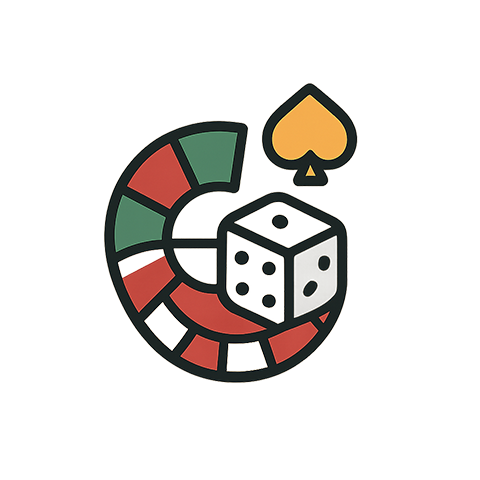
Playing Poker Against the Odds of Gambling
When people think of gambling, they often picture slot machines, roulette wheels, or high‑stakes poker tables. Yet, at its core, poker is a game of probability, psychology, and disciplined bankroll management—factors that can shift the odds against the house and, in some cases, against the player’s natural inclination to chase losses. Understanding how the game’s structure works against the traditional expectations of gamblers is essential for anyone who wants to play responsibly and with a realistic perspective on long‑term outcomes.
The Anatomy of Poker’s Odds
Unlike a single‑draw lottery where the probability is fixed, poker’s dynamic nature means odds fluctuate constantly. Every decision—from pre‑flop raises to post‑river folds—introduces new variables. The house’s rake, often a small percentage of each pot, systematically erodes player profits. Even in online environments where the rake can be lower, the sheer volume of hands can work against casual players who do not account for variance in their bankroll calculations.
- Pre‑flop probability: In Texas Hold’em, the chance of being dealt a specific starting hand (e.g., pocket Aces) is about 0.45%. While that may sound low, the probability of a strong hand improves dramatically as the community cards are revealed.
- Pot odds versus implied odds: Players must weigh the current pot against the potential future winnings. In many scenarios, the pot odds appear favorable, but implied odds—future betting potential—work against a player’s initial expectation.
- Variance and bankroll: Even a skilled player will encounter stretches where losses exceed short‑term gains. The house advantage, however, is embedded in the rake and the statistical edge held by professional players who use advanced strategy.
The Psychological Edge Against
Gambling appeals because of the human tendency to focus on immediate outcomes rather than long‑term probability. Poker taps into this by providing a sense of agency: you can make a decision each hand that influences the result. Yet, the psychological pressure—especially when betting against a table full of experienced opponents—often leads to sub‑optimal play.
“The biggest mistake players make is assuming that skill can override the statistical edge that the house retains,” says a seasoned tournament coach.
In practice, this belief works against players who underestimate the impact of small, cumulative advantages. Each call or raise can feel like progress, but the math tells a different story.
Bankroll Management: The Practical Countermeasure
One of the few reliable strategies to mitigate the house’s advantage is disciplined bankroll management. By setting strict limits and treating poker like any other business, players can ensure that the odds work against them only in a controlled manner.
- Set a dedicated bankroll: Allocate a specific amount for poker that you are comfortable risking over a defined period. This prevents personal funds from being eroded by the natural swing of gambling.
- Determine stakes based on bankroll: A general rule of thumb is to play no more than 1–2% of your bankroll at any given table. This keeps the impact of variance within manageable bounds.
- Track wins and losses: Detailed record‑keeping helps you identify trends and avoid chasing losses, a behavior that works strongly against consistent profitability.
Skill Development: Turning the Odds Around
While the house retains an inherent edge, skill can dramatically reduce that advantage. Players who study the game’s mathematics, read opponents, and adjust their strategies accordingly find the odds shifting against the house.
Key areas include:
- Positional awareness: Playing later in the betting order gives a strategic advantage, allowing players to make informed decisions based on opponents’ actions.
- Pot equity calculation: Understanding how often a hand will win against the opponent’s range improves decision quality.
- Bluff frequency: Balancing bluffs with value bets prevents opponents from exploiting predictable patterns.
These elements work together to counteract the house’s statistical edge. They require continual practice and a willingness to learn, but they are essential if you want to play against the odds on the poker side of gambling.
The Role of Variance: A Natural Opponent
Variance is the unpredictable fluctuation in results over a short period, regardless of skill level. In poker, variance can be so significant that even a proficient player may experience a losing streak that lasts weeks or months. This phenomenon works against the player’s expectation of consistent growth.
To navigate variance:
- Accept the long‑term nature of the game: Understand that short‑term outcomes are a product of randomness.
- Maintain emotional control: Avoid tilt, which can lead to further losses and amplify variance.
- Use a variance‑adjusted win rate: Incorporate statistical analysis that accounts for the standard deviation of earnings.
Online vs. Live Poker: Different Rakes, Same Principle
Online poker sites often advertise lower rake percentages than live casinos. While this might seem advantageous, the sheer number of hands played online can amplify the effect of variance, making it work against players who overplay the perceived advantage.
Live poker, on the other hand, offers a slower pace and more psychological factors that can be exploited. However, the house advantage remains due to the casino’s operational costs and rake structure. Both environments ultimately reinforce the idea that the house retains a statistical edge.
Responsible Play: Recognizing the House’s Advantage
Playing poker responsibly starts with acknowledging the fundamental fact that the house always has an edge, whether that edge is embedded in the rake or in the skill gap between professional and casual players. By treating poker as a game of skill rather than a form of gambling, players can approach it with a realistic mindset that works against the temptation to chase losses.
Practical steps include:
- Setting a time limit for each session to avoid fatigue.
- Using the “time out” feature when emotions run high.
- Continuously studying and adjusting strategies to stay competitive.
When players adopt these habits, they shift the balance from an automatic advantage held by the house to a more balanced, skill‑based contest.
Conclusion: The Balance of Odds and Skill
In poker, the odds are built into the structure of the game. The house’s rake, the statistical advantage of professional players, and the inevitable presence of variance all work together to ensure that, over time, the house will benefit. However, the player’s capacity to learn, adapt, and manage their bankroll gives them a powerful counterweight.
Ultimately, success in poker against the odds of gambling comes down to discipline, continuous improvement, and an honest appraisal of where the real advantages lie. Those who accept that the house retains a statistical edge, yet strive to exploit skill gaps, are the ones who can play the game intelligently and sustainably. By doing so, they transform the odds that once seemed firmly against them into a set of tools that work in their favor.


